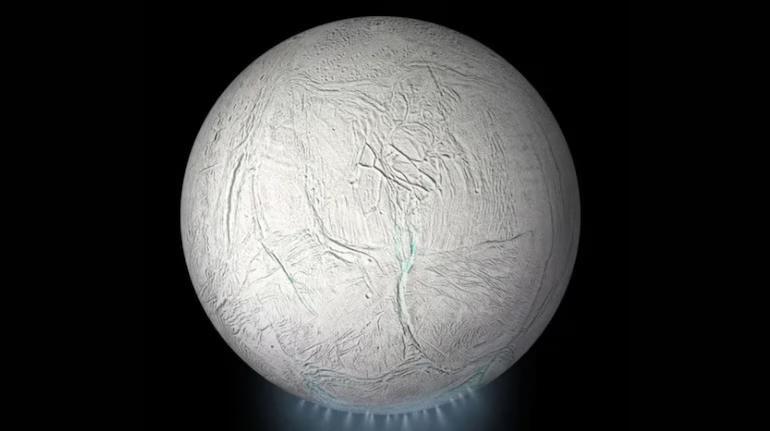
Icy moons with boiling oceans could support life: Study
The search for life beyond Earth has been an ongoing endeavor for scientists, with many focusing on the moons in our solar system that are thought to have subsurface oceans. These oceans, hidden beneath thick layers of ice, are believed to have the potential to support life, despite the extreme conditions that exist on the surface. However, a new study suggests that some of these icy moons may have boiling oceans, which could potentially make it difficult for life to exist. Or could it?
The study, which was recently published, found that some icy moons in our solar system may have subsurface oceans that boil when their ice shells become thin. This boiling occurs due to reduced pressure and temperature conditions near the water triple point, which allows liquid water to turn into vapor. The water triple point is the temperature and pressure at which water can exist in all three phases: solid, liquid, and gas. When the ice shell of an icy moon becomes thin, the pressure and temperature conditions near the triple point can cause the water to boil, creating a hostile environment for life as we know it.
However, despite these extreme conditions, researchers believe that life could still survive deeper beneath the ice. Organisms could potentially survive in the deeper waters, insulated from the extreme conditions that exist near the surface. This is because the boiling of the ocean would create a layer of ice on the surface, which would provide a barrier between the extreme conditions and the deeper waters.
The idea that life could exist in the deeper waters of an icy moon is not new. Scientists have long believed that the subsurface oceans of moons like Europa and Enceladus, which orbit Jupiter and Saturn respectively, could potentially support life. These oceans are thought to be in contact with the moon’s rocky core, which could provide the necessary energy and nutrients for life to exist. However, the discovery that some of these oceans may be boiling adds a new layer of complexity to the search for life.
So, how could life survive in a boiling ocean? The key to survival would be to find a way to exist beneath the layer of ice that forms on the surface. This could be achieved through a variety of mechanisms, such as the existence of hydrothermal vents, which could provide a source of energy and nutrients for life. Alternatively, organisms could potentially survive in the deeper waters, where the pressure and temperature conditions are more stable.
The implications of this study are significant, as they suggest that the search for life in our solar system may be more complex than previously thought. Rather than simply looking for liquid water, which is often considered a prerequisite for life, scientists may need to consider the potential for boiling oceans and the existence of life beneath the surface.
The study also highlights the importance of continued exploration of our solar system, particularly the moons of Jupiter and Saturn. These moons, which are thought to have subsurface oceans, offer a unique opportunity to search for life beyond Earth. By studying these moons and their potential for supporting life, scientists can gain a better understanding of the conditions that are necessary for life to exist, and potentially shed light on the origins of life in our solar system.
In conclusion, the discovery that some icy moons may have boiling oceans is a fascinating one, and highlights the complexity of the search for life in our solar system. While the extreme conditions that exist on the surface of these moons may make it difficult for life to exist, the possibility that life could survive deeper beneath the ice is an intriguing one. As scientists continue to explore our solar system and search for life beyond Earth, the study of icy moons with boiling oceans will likely remain an important area of research.






